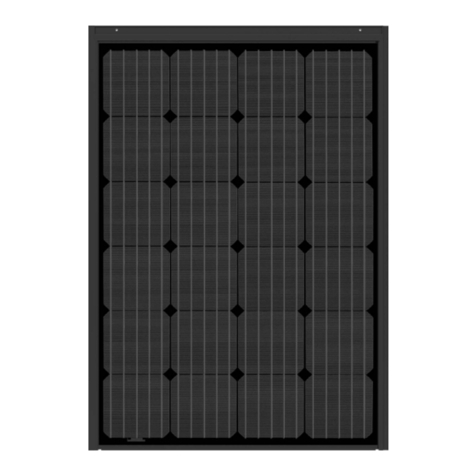
Perlight Solar PLM-OM Series Installation Manual 8www.perlight.com
V.01.2022 A1.0
Installation conditions
Working environment
Perlight Solar’s solar module should operate in the following environmental conditions:
Ambient temperature: -20⁰C to +45⁰C
Operating temperature of the module: -40⁰C to +85⁰C
Humidity: 85%RH
Mechanical load bearing capacity: the modules have passed the mechanical load test of wind
pressure of 2400Pa and snow pressure of 5400Pa; at the same time, they have passed the
mechanical load test of wind pressure of 3600Pa and snow pressure of 3600Pa. (Only limited
to the PV module models mentioned in this manual).
Note: The module mechanical load is based on the installation method and installation site.
Calculation of mechanical load must be carried out by a professional installer according to the
system design requirements.
Installation position
In most applications, PV modules should be installed in a location where they will receive
maximum sunlight throughout the year. In the northern hemisphere, modules should typically
face south, and in the southern hemisphere, modules should typically face north.
The module shall be installed in the place where sunshine is adequate. The module surface
shall not be partly shaded by trees, building, clothes, tools, packaging materials, etc. because
these objects will form shadow in the module surface leading to loss of system output power.
The module shall be installed in a well-ventilated place; meanwhile, enough space for airflow
shall be allowed at the back and sides of the module, so that the heat generated during
operation can be radiated.
Modules cannot be used in excessive and harsh environments, such as hail, snow, sand,
smoke, air pollution, soot, flammable gases, near open flames, and highly corrosive
substances (salt, salt spray, salt water, acid rain) , as this will aect the module's safety and
performance. If the installation environment is special, such as coastal, farm, high humidity
or wind and other large environment eects, please consult your local dealer for professional
support and confirmation. If needed to be installed at a high altitude, the altitude should not
exceed 2000m.
Modules should be installed on suitable buildings, or other suitable places to install modules
(such as the ground, garage, building facades, roof).
If modules are installed in locations with frequent lightning activity, the modules must be
protected against lightning strikes.
Do not install modules in locations with water immersion or near sprinkler systems.
The pressure of the wind or snow after installation of the modules must not exceed the
maximum allowable load.




























